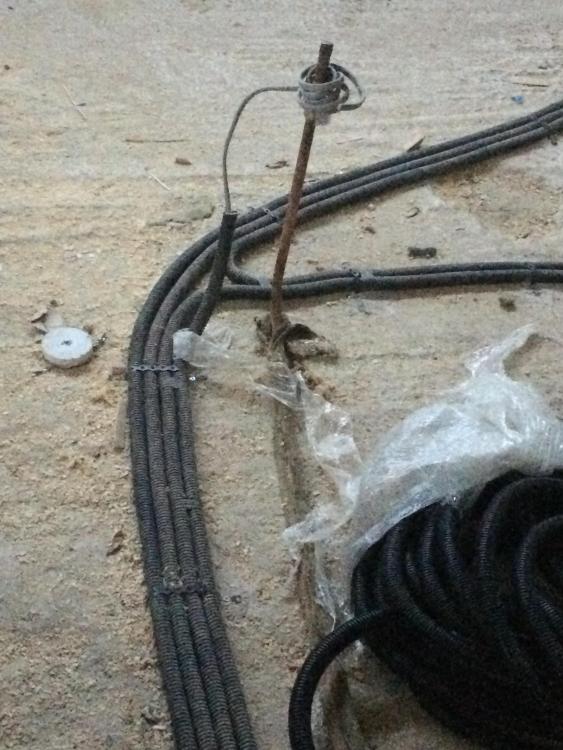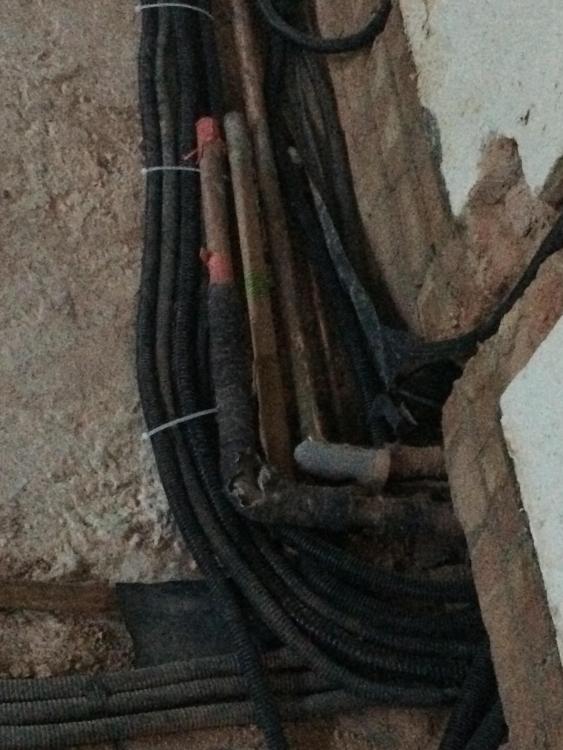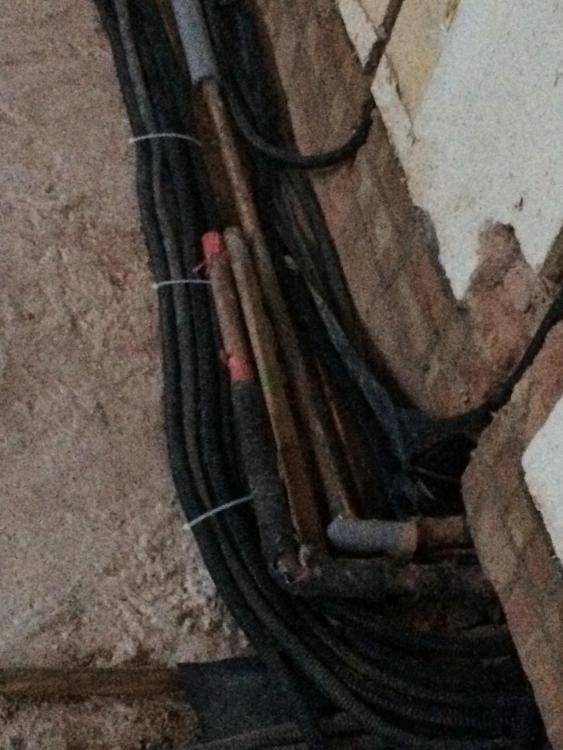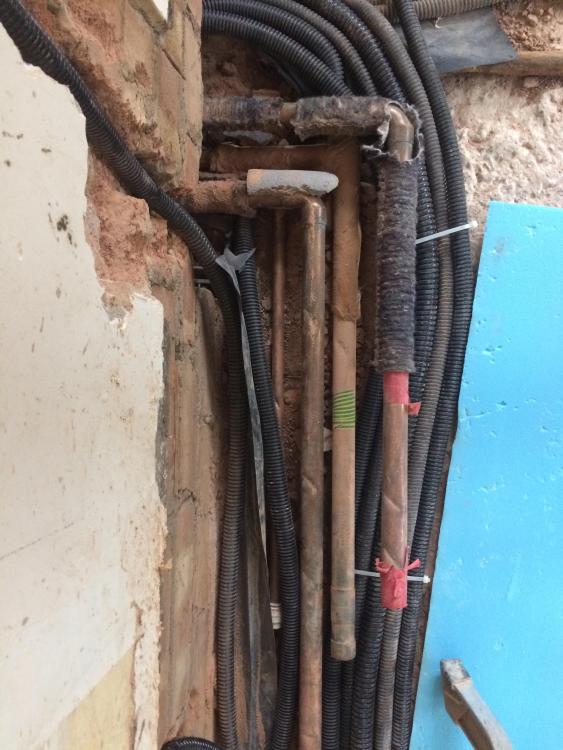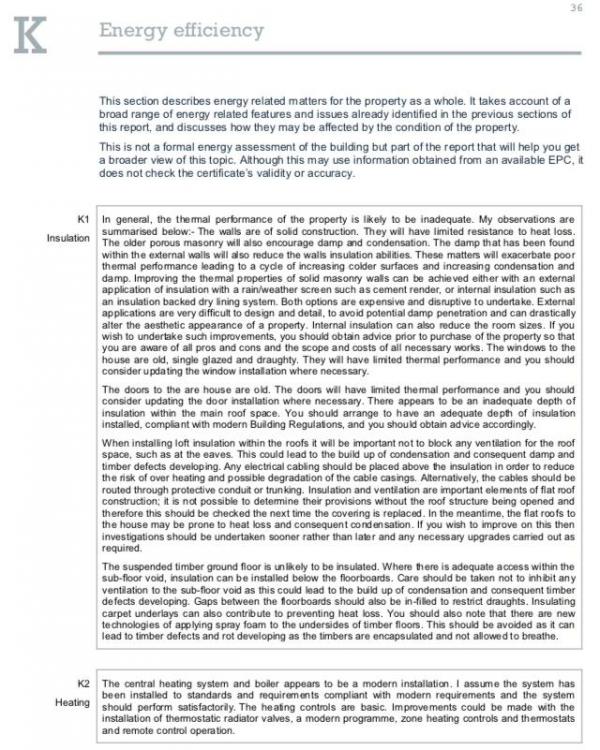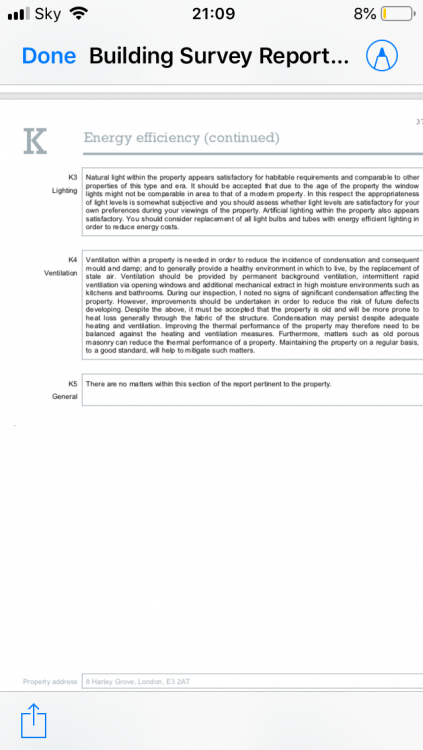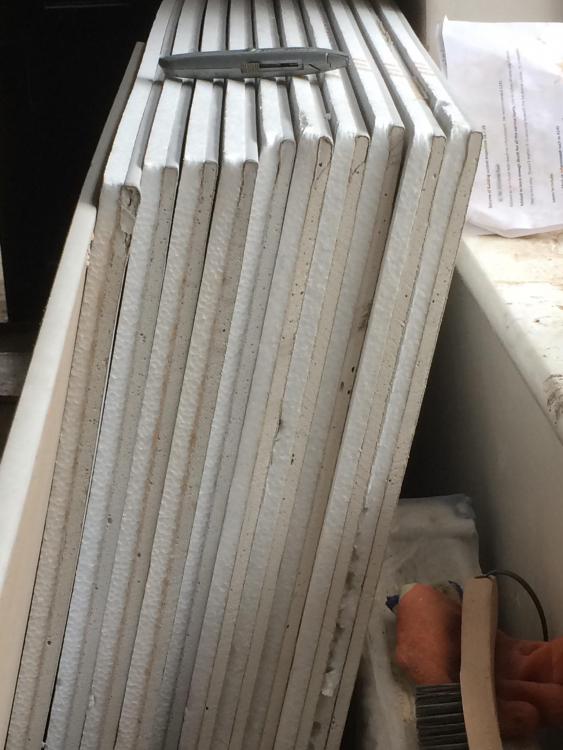
Katy
Members-
Posts
6 -
Joined
-
Last visited
Recent Profile Visitors
The recent visitors block is disabled and is not being shown to other users.
Katy's Achievements

New Member (2/5)
0
Reputation
-
Yes I agree the planning and execution has been terrible with very costly mistakes. This is the 2nd time now. The 1st time screed failed and cowboy builder. So I had to rip up entire floor! 2nd time, changed builder - again no proper planning despite thinking we were thinking and planning! The second overall builder still hasn’t realised there is a problem. He knew the plan with the floor and instructed plumber to rip up his pre-installed pipes on concrete floor to wall mount; but didn’t say a word to electrician when he saw all of their floor pipes being floor mounted. That has annoyed the electrician and the two are not on talking terms now. Its actually one one of the electricians who retrospectively commented their approach wasn’t ideal. The electrician can re-wire (at additional cost £1300); not ideal for him or me but he will do if I request. Subsequently the plumbers pipes - gas and water feeds (there’s 4 pipes in total ....) could then I guess be chased into the bricks, ie above the finished floor level but behind the units. There is a 10cm plinth above FFL, where pipework can be of any diameter but then above that the void behind kitchen cabinets is only 2cm. Plumber has yet yet to install drainage waste pipes for sink and DW - anyone know what diameter that would be? And if they’re usually wall mounted or chased into wall (my walls are all brick - so chasing not easy) then likely the builder would have to re-board the kitchen a 2nd time if re-wiring ceiling down. It all sounds a shame and disruptive and expensive - but is this the path I should be taking??? Other idea I had is to maybe chase concrete slab for the electrics conduit and plumbers pipes to fit snugly there. I’ve been quoted bout £800. And then insulation can sit flat on top with minimal chasing. Is this an OK alternative? The obvious issue is access for maintenance if ever plumbers pipes or electrical cabling ever fail. How often does that happen? The plumbers pipes are all copper and the electricians cabling is all in galvanised steel conduit. Option 3 - chase out insulation for electrician pipes and wall mount plumbers pipes - can’t chase in these as electricians pipes running floor up chased in already. Any suggestions on what remedial approach I should take given circumstances???? Many thanks
-
Hi I am refurbishing a property, and the kitchen is proving to be a very tricky room in terms of planning and design - especially the floor as space for floor build up here is really tight - 142 ml from top of concrete slab to top of tile. Floor build up DPM 1200 gauge (installed) 100mml poured concrete slab (installed) 60 ml insulation (awaiting installation) wet UFH system - polypipe - red trays and 15mm diameter pipes at 100ml spacings (awaiting installation) 65 ml screed (awaiting installation) adhesive and tile (awaiting installation) The kitchen floor is currently under construction. there is 100ml poured concrete slab in situ. On TOP of this the plumber HAD floor mounted all the pipes - gas, water - softened and un-softened. Insulation, then screed was laid on top. These pipes were floor mounted at the periphery of the room, on top of which would sit tall kitchen units. Due to screed failure, I had to take up the screed, UFH system, insulation - All of it. Newly appointed second Builder came along - then questioned why the plumbers pipes are floor mounted? said it would lead to screed failure as 65 ml minimum thickness would become much lesser and therefore risk of cracking and said that actually the plumbers pipes should all be wall mounted, a) for access b) to not be within or impact the screed. So the poor plumber has actually started to rip up all those pipes. There will be some plumbing pipes on top of the concrete slab though - gas supply to the island and radiator pipe as (UFH will not be sufficient as sole and only source of heating) The electrician subsequently came and did all his first fix and he too has floor mounted all his cabling in 2cm conduits, rather than ceiling down with all his chasing and cabling (I can only presume was easiest route for them) and 1st floor was boarded up with tongue and groove chipboard. Im now pondering whether asking the poor plumber to rip up all his pipework and wall mount is actually the right thing to do?? Ive lost trust in a lot of tradesmen and even 2nd appointed builder isnt thinking about the whole project holistically and im having to work out alot of things for myself. So the question is if youre refurbishing a kitchen (NOT an extension) and done away with the suspended timber floor, poured concrete and then laying insulation, Wet UFH system and then 65 ml screed - is it NORMAL (common practice) to wall mount the plumbers pipes? If so, should that be above screed level, or can it be wall mounted within the screed. I spoke to the kitchen firm - they confirmed a 10cm plinth above the screed which can hold pipes of any diameter, above that are tall kitchen housing units with integrated appliances with only a 2cm void. Ive looked at what remains of plumbers current floor mounted pipes - there are 4 - two of which are 5cm in diameter each with the insulation surround. Kitchen firm suggested to try and keep plumbers pipes in 10cm plinth area but they wont all fit there. Or for the pipes to be still wall mounted but within the screed layer.
-
Oh thanks for clarifying. I don’t have EPC to hand, but attached is structural surveyors extract thanks
-
Thanks everyone for replies to date. When I had 1st bought the home, I did go round with insulation experts and they all quoted 25-30 k for EWI (external wall insulation). Given the price and my budget not being able to stretch that far (I decided not to pursue). Also my anticipated length of living there is btw 5-10 yrs so had to consider cost effectiveness for me personally. Yes - the heating has been zoned. Ground and 1st floor separate. Upstairs are 4 bedrooms. Here 2 ceilings are brand new - the builder has used standard plasterboard with 12ml foam (ie thinnest PUR board) one can buy and put rockwool between joists. In the master bedroom which is large - with a big bay window, I have also asked for new ceiling (not yet done) but here I’ve suggested a PIR board (but they are expensive!!!). About 600£ just for the boards for the master bedroom ceiling. This room has 3 external walls as detached and this room is at front. On ground floor - the new ceilings are hallway and kitchen only. So I will insulate here In between the joists with rockwool and insulated plasterboard in hallway only. The kitchen can’t have insulated plasterboard beneath joists, it will have to between joists (as otherwise affects sliding glass doors which are floor to ceiling. The 2 lounge ceilings have been skimmed. Reading prior replies - is the collective feedback to lift up all the floorboards on the 1st floor and put rockwool between all joists everywhere? So that even rooms on ground floor with non-insulated ceilings then are a bit insulated from above? To reap benefit of zoned heating? I can maybe look into IWI (internal wall insulation) in the master bedroom (albeit reluctantly). Ive never done a house refurbishment before, I had no comprehension of what I was inheriting when I bought it. If only it didn’t have solid walls.... like I said, my budget is tight and this isn’t even a forever home (probably btw 5-10yrs). I currently live in a new build that meets regulations, so I’m sure I’ll feel it, but I just want to do mid-level. I remember walking round round with a senior builder at the tendering stage, and he seemed to think new double glazing and central heating alone would be fine. My current builder, also thinks I’ve gone mad and seems to think I’ll be roasting, as about 40% of ceilings will be new with rockwool. And he said we can insulate the roof properly where 25% heat loss happens. Thanks can you clarify - shall I ask the builder to lift all floorboards on 1st floor, to put rockwool btw joists at ceiling of ground floor? The hosts are quite deep here. If so, does this happen after 1st fix electrical wiring?
-
I’m refurbishing a early 1930s property. Detached. Solid brick wall construction with crittle windows. Im part way through, structural demolition work complete, 1st fix plumbing done. Electrics 1st fix yet to start. The putting back together has started as the builder has started putting ceilings back together then he will halt till electrician done their work. I wish I’d found this forum sooner!!!! So many questions and queries I’ve had along the way. Ive got a question about insulation but hopefully will be able to post on that forum soon specifically but in the interim here is my query: I am having brand new ceilings put in ground floor hallway and 1st floor bedroom. Above is loft. It’s a solid wall property with no wall or floor insulation. Ie high heat loss. Double glazed windows are ordered. I want to specify insulated plasterboard for new ceilings for thermal performance (not acoustic). My builder has said most people either just use standard non-insulated plasterboard and then rockwool on top in between the joists. He thinks I’m going overboard. My builders alternate suggestion was a standard plasterboard with 1cm foam, (which I think is called a PUR board?) and again rockwool In between joists on top. Is this effective? I was thinking PIR board. But then what brand and thickness is appropriate?? I just need advice on the most effective material/method for insulating ceilings in intermediate rooms? Ie bedtooms/lounges from a thermal perspective. I rang buildbase: They said they have 6 different products. 1) Siniat PIR board at 37.5ml - this is what they recommended as the most effective. 2) Thermal XP board 27ml 3) 4 different thicknesses of polystyrene (foam) plasterboard at 22, 30, 40 and 50 ml. My builder suggests getting this last one at 22ml and that with rockwool in between the joists too will suffice. He is a youngish builder, early 30s whose forte was the structural work and how I originally appointed him. He’s great to work with, but there are are areas sometimes where I wonder if he’s out his depth or experience. He does listen to my concerns and is willing to work with me But I would really appreciate guidance on appropriate product. Like I said earlier, he said his previous clients all just used non-insulated standard plasterboard and rockwool between joists at ceilings at ground and 1st floor. My my concern is this is an old property, very poor thermal performance, i just want to do what’s right for the property. Im not sure if I’m going overboard or overworrying. Detached property. The windows I have upgraded from single to double glazed. Wall insulation - external I couldn’t afford!!! Internal I don’t want to lose floor space. Floor is suspended timber non-insulated. Roof insulation I will do and board up as plan to use loft for storage. Ceilings wise - whilst putting up new ones if too far gone during structural work, I want to do right/effective thing thermal wise. Any insight from those in the know would be appreciated property is in london. Building regulations don’t apply as refurbishment of existing property (no extensions). Photo attached of plasterboard builder suggests 22ml siniat PUR board https://www.siniat.co.uk/en/products-and-systems/products/internal-boards/gtec-eps-thermal-board this is product. Is it right one??? many thanks

